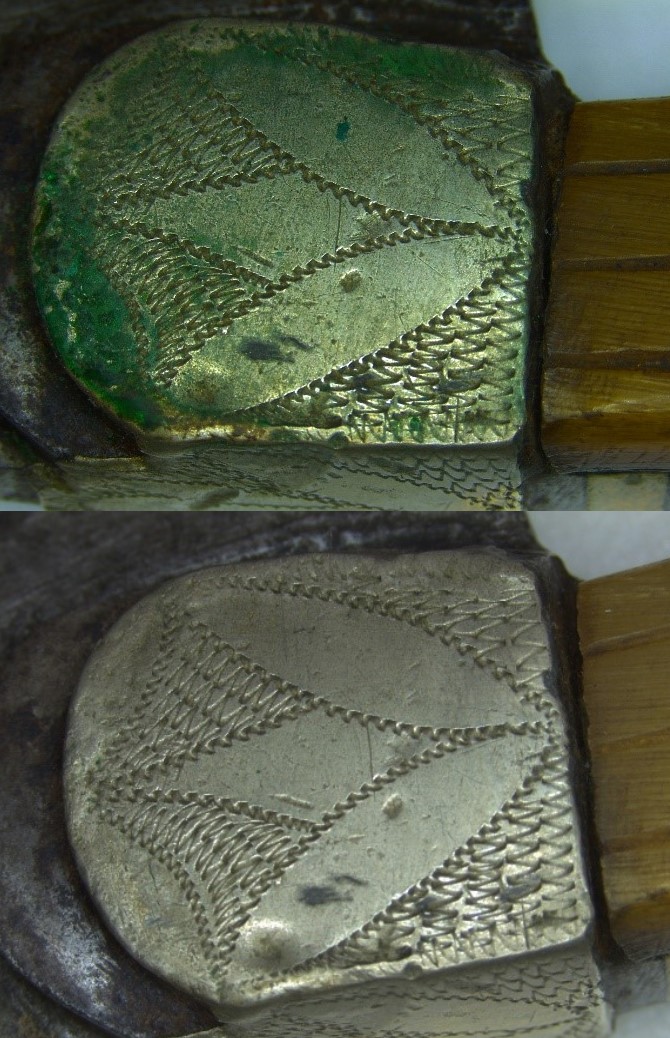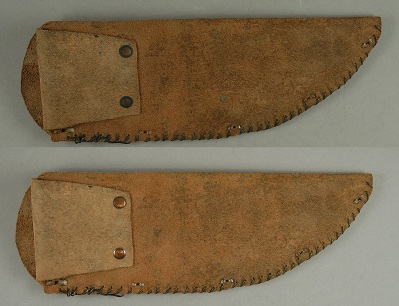Knife & Sheath
Object

The object is an ethnographic knife and sheath which forms part of the collections at the Oriental Museum in Durham. The knife is composed of an iron blade which curves slightly on the sharpened side. The object also consists of an iron tang and a horn handle. The horn handle is formed from two horn scales, which fit around the iron tang and are held in place using copper alloy rivets. The top of the tang shows zig-zag inlay decoration running the length, which appears to continue onto the spine of blade. The bolster of the blade appears to be decorated with copper alloy on three sides. Each side of the bolster is decorated with an incised flower decoration. The sheath of the knife had been made from a single piece of leather which is held together using copper alloy rivets and wire.
Condition
- There are several areas of iron corrosion on the surface of the blade
- Green corrosion can be seen on the copper alloy bolster decoration
- There is evidence of copper corrosion on the rivets and wire from the sheath
- There is general museum dirt on the surface of the object.
Conservation

The blade was initially cleaned using cotton wool swabs with an appropriate solvent and added surfactant. This not only removed the general surface dirt but was also successful at removing some of the loose iron corrosion. The same solvent was used to treat the bolster and successfully removed the majority of the copper corrosion from the surface. The metal components of the knife were then treated using pure ethanol in order to remove any surfactant residue. This treatment aided in the removal of the remaining areas of copper corrosion on the bolster.
To remove the remainder of the iron corrosion from the surface of the blade, abrasive mechanical cleaning was implemented. This method was successful and the blade was treated to a final solvent clean in order to remove any remaining corrosion residue. Finally, the metal components of the knife were coated using renaissance wax as this would help prevent future deterioration.

The horn handle was cleaned using cotton wool swabs and a suitable solvent to remove surface dirt. This initial treatment revealed further dirt between the horn scales and iron tang. The decision was made to remove this dirt as it could have caused further damage. Mechanical methods using wooden bamboo sticks were found to be the most successful method. The horn handle was given a final solvent clean to remove any final surface dirt.

Although the leather of the sheath didn’t require treatment the metal components did. The copper alloy rivets and wire were mechanically cleaned using wooden toothpicks to remove the loose copper corrosion products. As this method wasn’t able to remove the tougher corrosion, an appropriate solvent solution was applied sparingly using cotton wool swabs to soften these areas. The remaining corrosion was then able to be removed using the previous mechanical method. Finally, a tyvek cover was made for the blade in order to prevent the blade and sheath coming into contact during storage.
